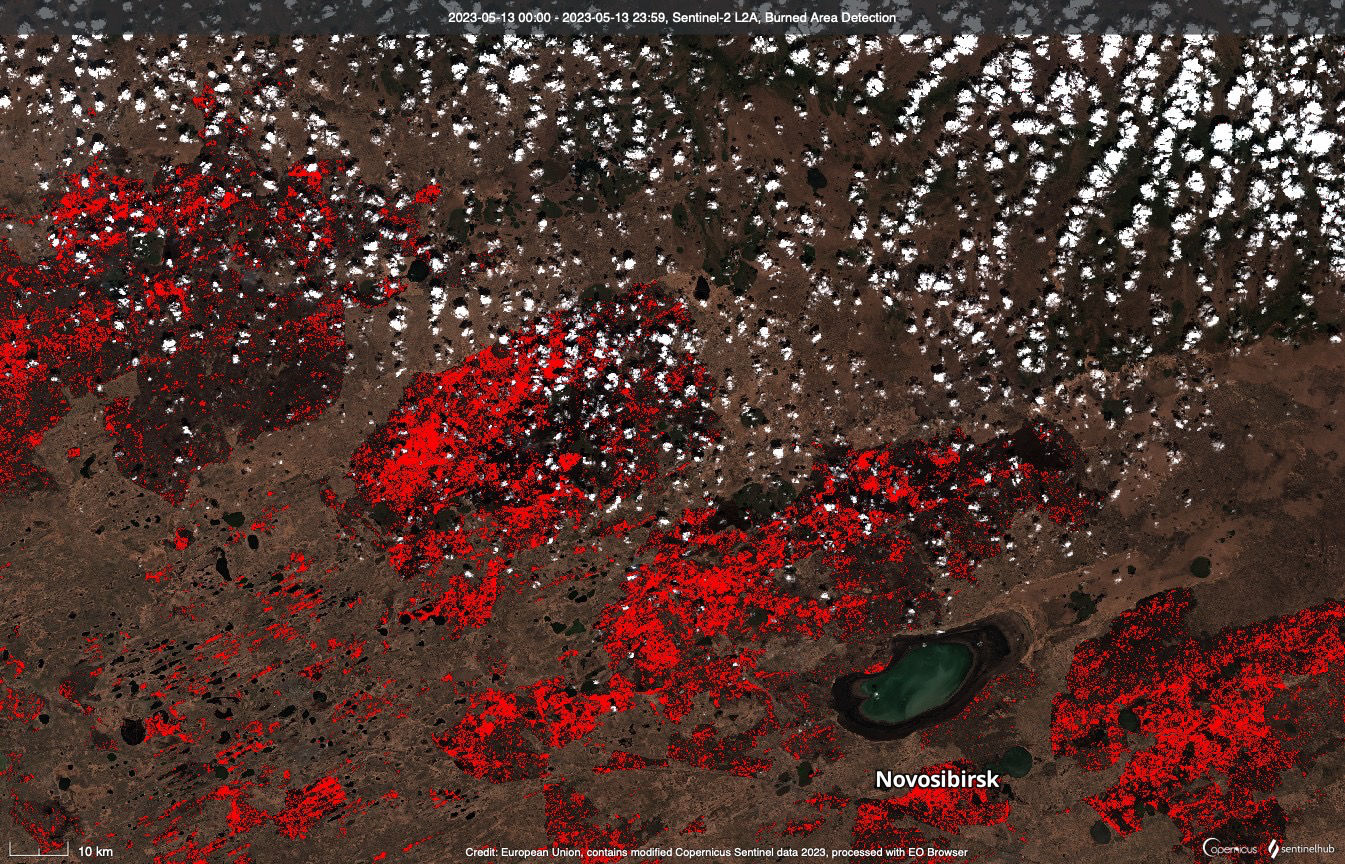Situation Update 15 May 2023
Spring has arrived in the region north of Kazakhstan, a wide expanse of land stretching 1,200km from Yekaterinburg, to Kurgan, Tyuman, Omsk and Novosibirsk. As the snow melts, the lack of precipitation in this area has steadily led to an increase in wildfires. Precipitation data from JAXA Global Rainfall Watch in this area since 24 April 2023 shows that there was little to no precipitation, especially in the area surrounding Omsk to Novosibirsk.
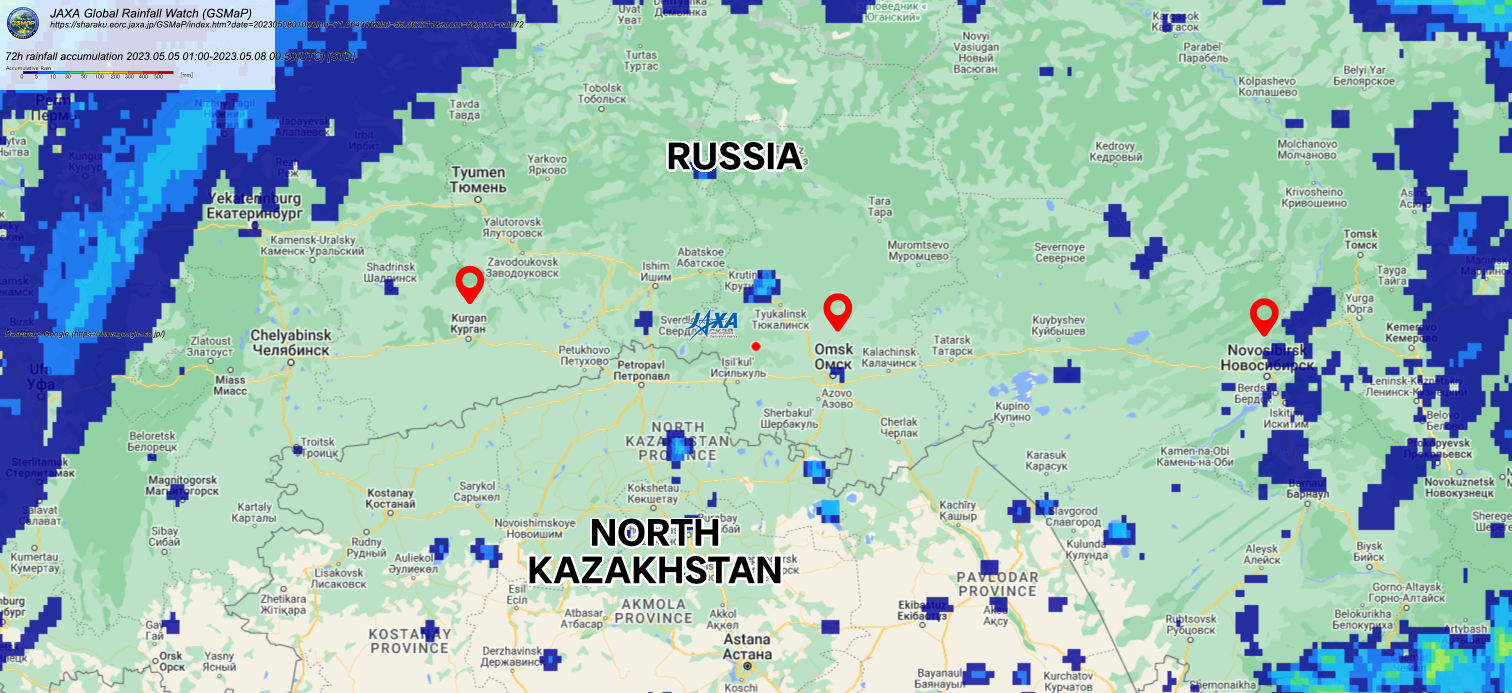 Figure 1: 72hr accumulated precipitation data from 5th to 7th May UTC. As seen, no precipitation was recorded from an area spanning Yekaterinburg to Novosibirsk for a period of 72hrs. Source: JAXA Global Rainfall Watch
Figure 1: 72hr accumulated precipitation data from 5th to 7th May UTC. As seen, no precipitation was recorded from an area spanning Yekaterinburg to Novosibirsk for a period of 72hrs. Source: JAXA Global Rainfall Watch
On 8th May 2023, data from NASA’s Terra and Aqua MODIS instrument showed many hotspots (see Figure 2) appearing in this area. This is corroborated by imaging captured by Copernicus’ Sentinel-2 satellite (see Figure 3).
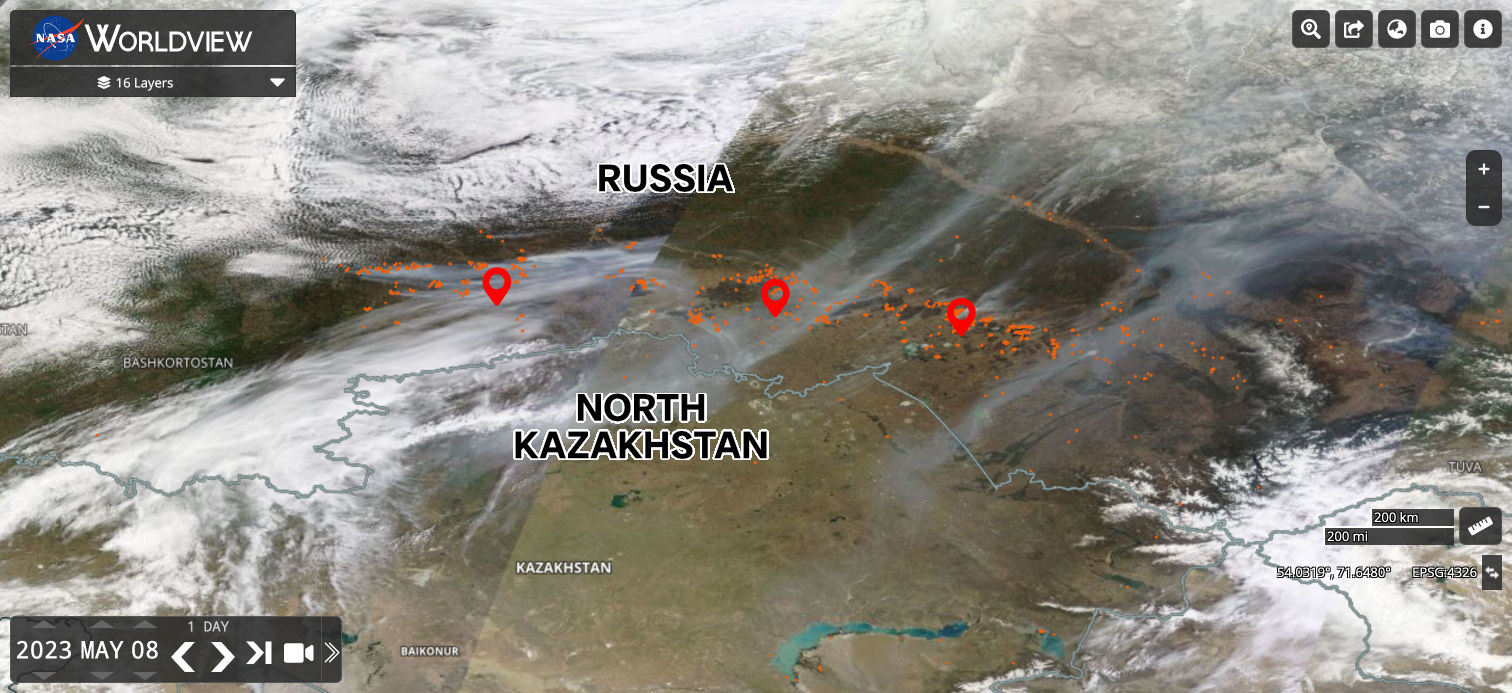 Figure 2: Hotspots denoted in red showing active wildfires in Russia in the region north of Kazakhstan. Data from the MODIS instrument aboard NASA's Terra and Aqua satellites. Source: NASA Worldview and MODIS Terra and Aqua Satellites
Figure 2: Hotspots denoted in red showing active wildfires in Russia in the region north of Kazakhstan. Data from the MODIS instrument aboard NASA's Terra and Aqua satellites. Source: NASA Worldview and MODIS Terra and Aqua Satellites
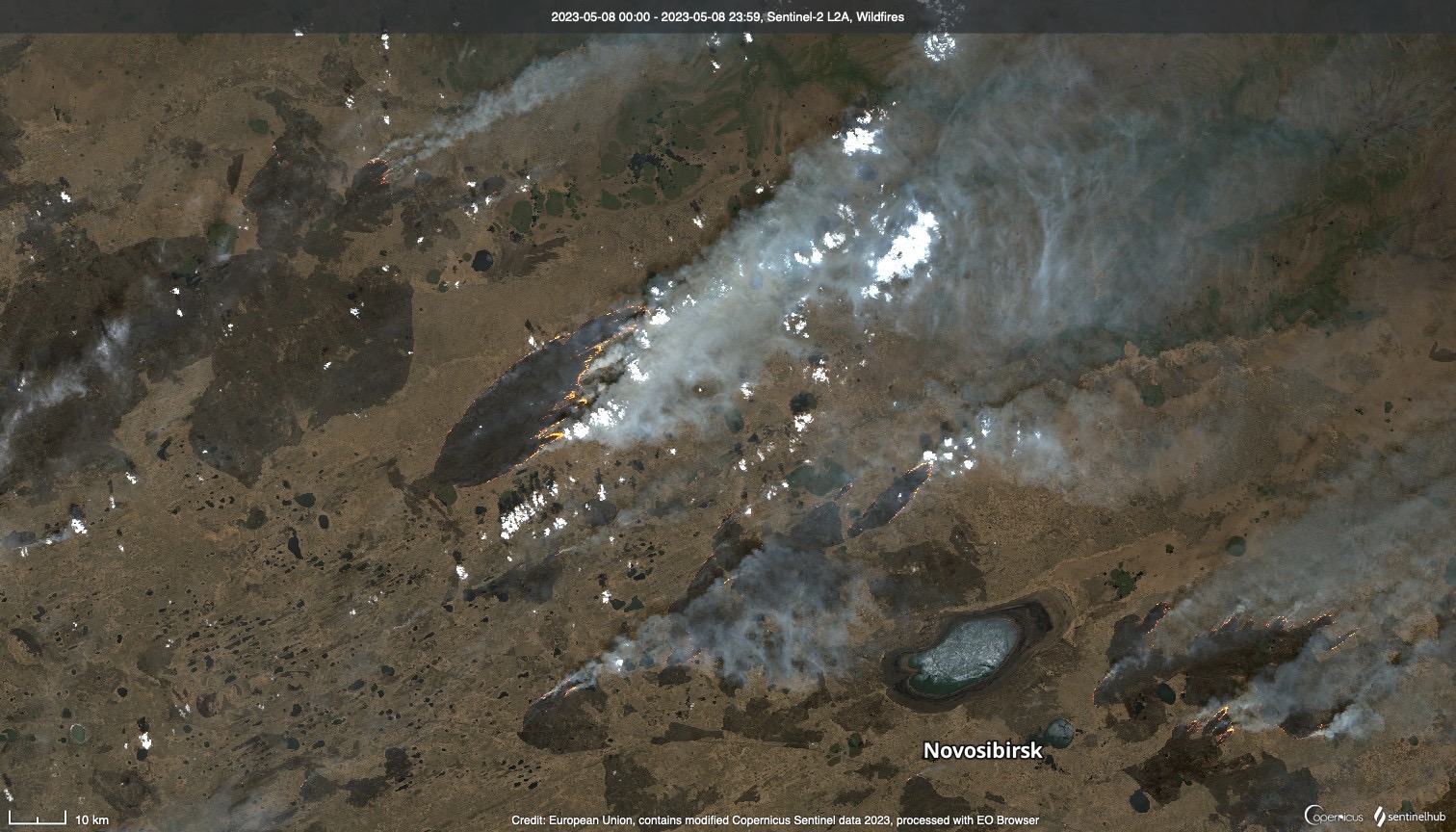 Figure 3: Imagery from Copernicus Sentinel-2 satellite shows active wildfires near Novosibirsk. Source: Copernicus EO Browser / Sentinel-2
Figure 3: Imagery from Copernicus Sentinel-2 satellite shows active wildfires near Novosibirsk. Source: Copernicus EO Browser / Sentinel-2
On the same day, Kyrios began the intervention to extinguish these wildfires. See announcement on Twitter and Facebook.
Over the next few days, data from JAXA Global Rainfall Watch in this region showed that rain had fallen (see Figure 4). There was also snow, and together, it helped lead to a reduction in the hotspots. We’ll continue to monitor the situation, and as we get more up to date data on the hotspots, we’ll post another update.
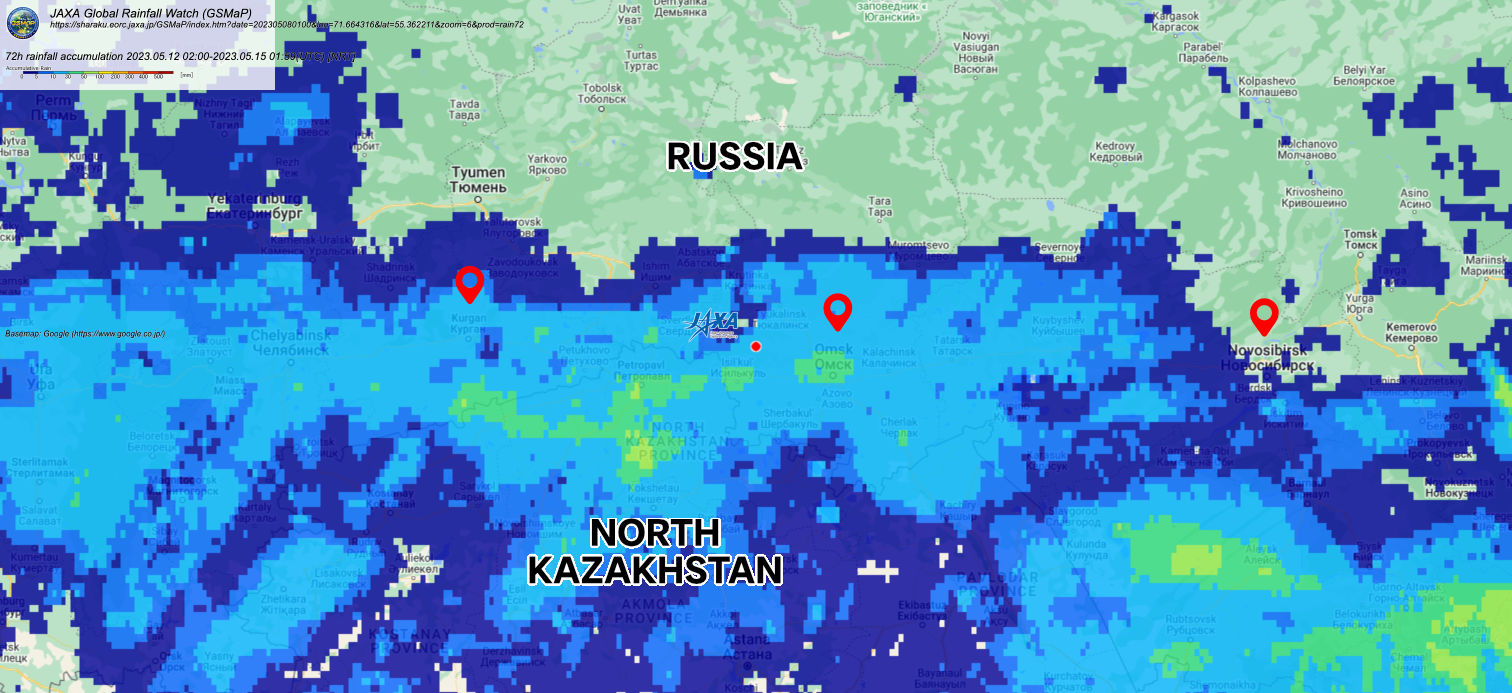 Figure 4: 72hr accumulated precipitation data from 12th to 14th May UTC. If you refer to precipitation data from previous days, rain actually started arriving from the 9th. Source: JAXA Global Rainfall Watch
Figure 4: 72hr accumulated precipitation data from 12th to 14th May UTC. If you refer to precipitation data from previous days, rain actually started arriving from the 9th. Source: JAXA Global Rainfall Watch
Follow us on Twitter @Kyrios_Earth and Facebook @KyriosEarthHealerEn for updates. If you have questions, are interested in contributing, or wish to report severe wildfires in this area, please contact us.
Data sources: NASA Worldview, MODIS instrument aboard Terra and Aqua satellites, Copernicus Sentinel-2 satellite, JAXA Global Rainfall Watch
About Kyrios’ climate interventions
Kyrios’ climate interventions across key areas on Earth aims to reduce impact of disasters on local communities through deliberate weather modifications, healing Earth’s systems and providing us time to move towards a more sustainable future. This complements existing mitigation and adaptation measures. Kyrios also intervenes in climate disasters to reduce their destructive impacts on affected communities.
For more information on Kyrios’ climate crisis interventions, please go here. If you have questions, feel free to ask them here.
